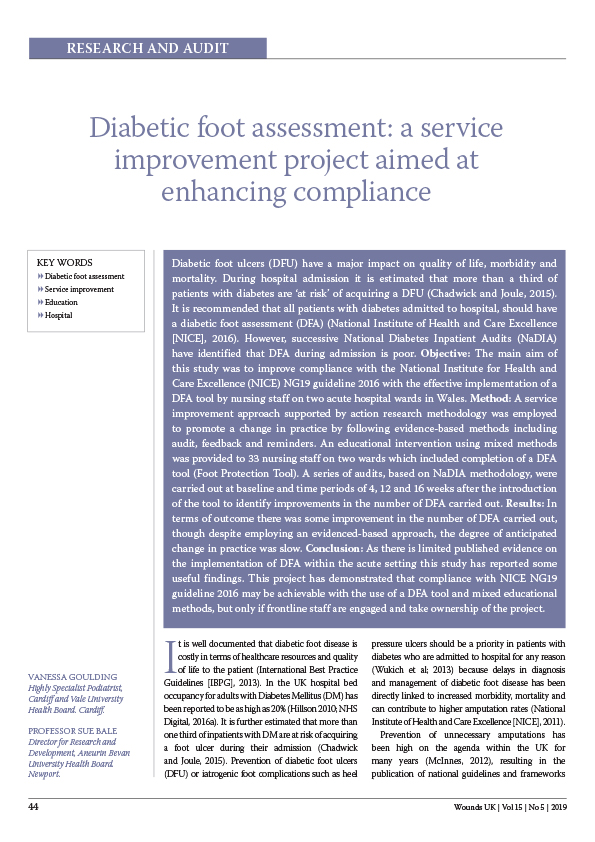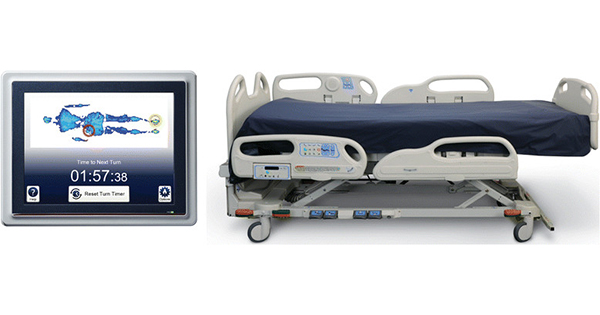Diabetic foot ulcers (DFU) have a major impact on quality of life, morbidity and mortality. During hospital admission it is estimated that more than a third of patients with diabetes are ‘at risk’ of acquiring a DFU (Chadwick and Joule, 2015). It is recommended that all patients with diabetes admitted to hospital, should have a diabetic foot assessment (DFA) (National Institute of Health and Care Excellence [NICE], 2016). However, successive National Diabetes Inpatient Audits (NaDIA) have identified that DFA during admission is poor. Objective: The main aim of this study was to improve compliance with the National Institute for Health and Care Excellence (NICE) NG19 guideline 2016 with the effective implementation of a DFA tool by nursing staff on two acute hospital wards in Wales. Method: A service improvement approach supported by action research methodology was employed to promote a change in practice by following evidence-based methods including audit, feedback and reminders. An educational intervention using mixed methods was provided to 33 nursing staff on two wards which included completion of a DFA tool (Foot Protection Tool). A series of audits, based on NaDIA methodology, were carried out at baseline and time periods of 4, 12 and 16 weeks after the introduction of the tool to identify improvements in the number of DFA carried out. Results: In terms of outcome there was some improvement in the number of DFA carried out, though despite employing an evidenced-based approach, the degree of anticipated change in practice was slow. Conclusion: As there is limited published evidence on the implementation of DFA within the acute setting this study has reported some useful findings. This project has demonstrated that compliance with NICE NG19 guideline 2016 may be achievable with the use of a DFA tool and mixed educational methods, but only if frontline staff are engaged and take ownership of the project.







